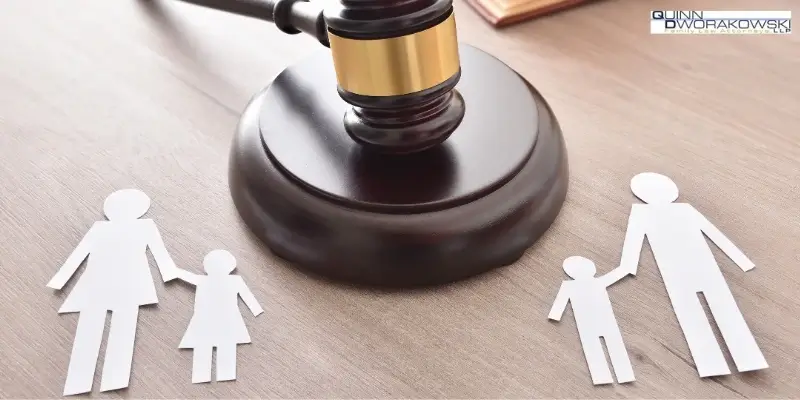How to Get Full Custody of a Child Without Going to Court in California? 2025


Custody disputes can be stressful, especially when you are trying to prioritize your child’s well-being while protecting your rights. Many parents assume that full custody can only be granted through a courtroom battle. If you are seeking full custody of your child, you may be wondering how to get full custody of a child without going to court in California. This blog explores how you can secure full custody without entering a courtroom.
Submitting a Custody Agreement Without a Hearing
You can be given full custody without going to court in California if the other parent is in full cooperation with your goals and aims. The simplest way to make this happen is to create a written custody agreement (also known as a parenting plan). This document details a legal and physical custody agreement and must be signed by both parents. Once the courts approve this agreement, you can gain full custody without the need for a hearing.
This method works when both parents agree that one parent should have full custody. The term full custody means sole legal custody. The parent with this designation has complete decision-making authority over the child and retains sole physical custody, meaning they determine where the child lives. The court’s role in this process is minimal when both parties fully agree.
As of 2023, 22.5% of children in California reside in a single-parent household. Some of the caregivers of those children have full custody of the children. While many arrangements involve some type of shared custody, there are times when giving full custody to one child serves the interests of the child.
Forms to File and Where to Submit Them
Parents must file a Stipulation and Order for Custody and Support (form FL-355). They can also file a Child Custody and Visitation Application (also known as Form FL-311) with their agreement attached. This paperwork can be submitted at any family court location in California, including:
- Orange County Family Law Court – 341 The City Drive South, Orange, CA 92868
- Stanley Mosk Courthouse (Los Angeles Superior Court) – 111 N Hill St, Los Angeles, CA 90012
- San Diego Central Courthouse – 1100 Union St, San Diego, CA 92101
For those unable to agree with the other parent, alternatives to court include private mediation or custody negotiations through attorneys. In these cases, if the agreement is reached privately, it still must be signed and submitted to the court to become a valid order. Only orders signed by a judge carry legal weight in California. Following a divorce, if both parents cannot come to an agreement over child custody, a judge will ultimately make those determinations based on the facts of the case and the best interests of the child. The current divorce rate is 7.45%.
Protective Custody, Emergency Orders, and Default Cases
Sometimes, full custody is granted due to safety concerns. In 2021, 1,072 children were taken into protective custody in Orange County, often due to abuse, neglect, or abandonment. When safety is at stake and the other parent poses a risk, the court may allow one parent to file for emergency custody orders without a hearing, especially if the other parent fails to respond or is unfit.
Parents who want to pursue full custody in situations involving abuse or protective custody often work with Child Protective Services (CPS) and submit investigative reports as part of their paperwork. Although court involvement is still required to finalize custody, hearings may be avoided if the other party defaults or fails to appear.
The ideal route to full custody without a courtroom battle is through mutual agreement, proper documentation, and formal filing with the court. All California courts provide self-help resources for parents looking to handle custody paperwork without an attorney.
FAQs
What Statements Can Hurt Your Custody Case in Court?
Speaking negatively about the other parent, refusing to cooperate, or ignoring court orders can seriously damage your case. Avoid exaggerating or making emotional outbursts. Judges want to see maturity, not conflict. Stay focused on your child’s needs, not personal grievances. The court looks for parents who support the child’s relationship with both sides and prioritize their long-term well-being.
What Qualifies for Full Custody in California?
Full custody may be granted when one parent shows the other is unfit due to abuse, neglect, addiction, or instability. Courts also consider consistency in schooling, home life, and medical care. If the child’s safety or well-being is at risk, judges may limit one parent’s rights. Strong documentation and a clear parenting plan help support a full custody request.
How To Win Custody as a Mother?
Mothers do not receive automatic preference in California. To gain custody, you must show that you can provide a stable home, meet your child’s physical and emotional needs, and support their relationship with the other parent. Courts evaluate parenting involvement, living conditions, and communication. Being prepared, organized, and focused on the child’s best interests improves your chances of a favorable outcome.
Who Are the Ideal Witnesses for a Custody Case?
Ideal witnesses include teachers, daycare providers, doctors, or relatives with firsthand knowledge of your parenting. These individuals should speak to your involvement, consistency, and the child’s well-being in your care. Avoid biased or hostile witnesses. Judges value neutral third parties who can give honest insight into your parenting and the overall home environment your child experiences.
Schedule Your Child Custody Consultation Today
If you’re seeking full custody without the stress and cost of litigation, understanding your options is critically important. California allows parents to reach custody agreements outside of court, but the process still requires careful planning and legal accuracy. If you believe your child would be safer and happier with you as the primary caregiver, having legal representation can help you achieve your aims in court.
At Quinn & Dworakowski, LLP, we help parents create enforceable custody agreements that reflect their child’s best interests while avoiding unnecessary conflict. Schedule a consultation today to learn how we can guide you through the process and help you secure the custody arrangement your family needs.



